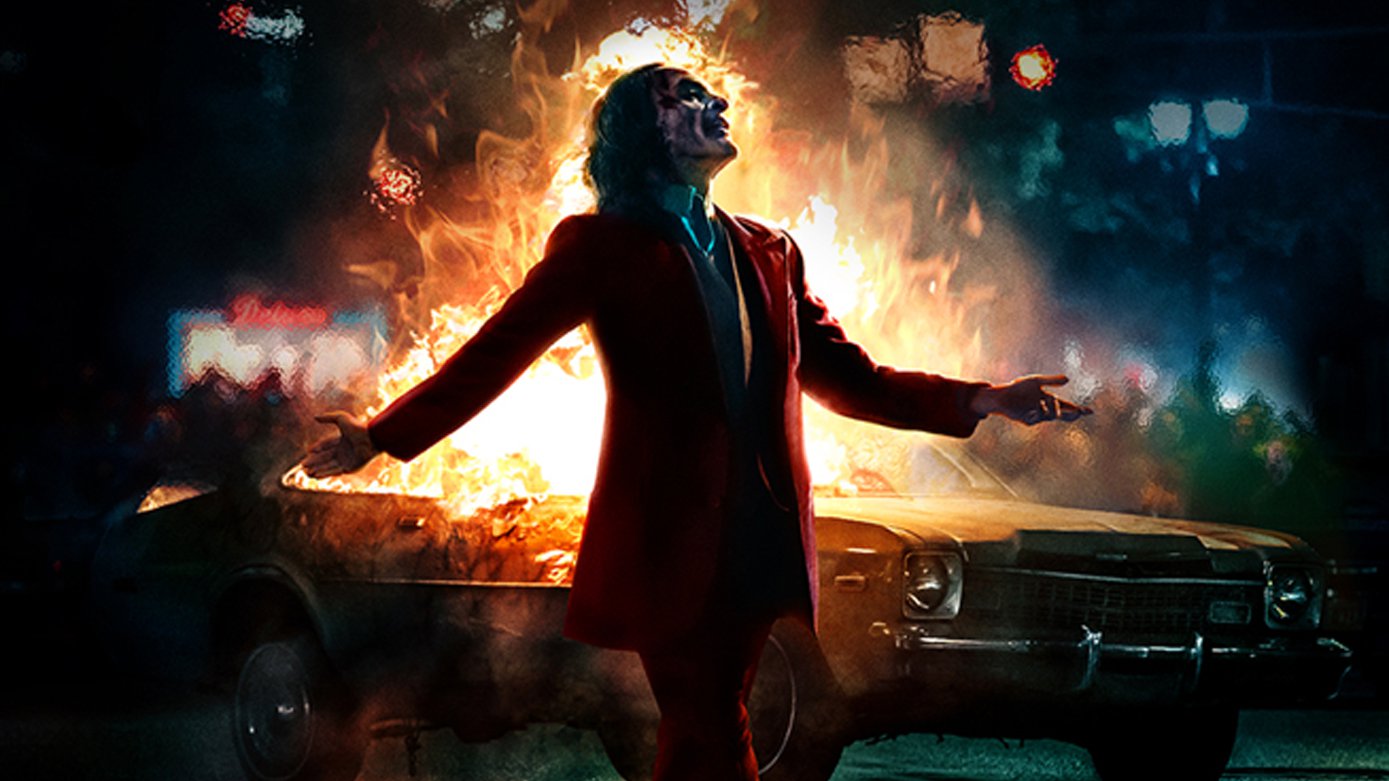Jwalika Balaji (Batch of 2023), with her newfound love for all things Batman, writes this movie review with a little message to ‘Movies with Megha’ at the end.
Disclaimer: This review is only for the initiated, those who have seen ‘Joker’ and have walked out of the movie theatre stunned into silence. It has a lot of spoilers, so do read at your own risk. The author claims no responsibility if any cinematic viewer’s movie-going experience is ruined. Consider yourself adequately warned.
There has been a lot of hype, a lot of discussion and a lot of mystique surrounding the release of the recent movie that has taken the world by storm – ‘Joker’. It claims to be an independent film and is a different iteration of the character as opposed to the Joker played by the brilliant Heath Ledger in ‘The Dark Knight’.
The first soundtrack that stands out in the movie is the Baroque, which plays in the background when Arthur is bounding along the streets of Gotham with a signboard in his hand. It is a lilting form of classical music, setting an atmosphere of cheer and carefreeness. Then Arthur’s head is bashed in with the same signboard and the title flashes on the screen. This reflects the mood of the entire movie – every time you think there is hope, you are made to think again.
The rest of the movie is predominantly carried by heavy cello music, conveying depth, despair and a strain of melancholy. It adds a layer of depression to all that’s happening on the screen. The shots of Arthur’s face are mostly close-ups, with Phoenix’s face covering almost two-thirds of the screen. The shots in the subway, his house, in the washrooms, in the hospital and most other places are mostly narrow and focus on two or three characters in the screen at a time. This forces the viewers to acknowledge Arthur’s closed-off, solitary, almost claustrophobic world. It reinforces the fact that he is alone and prefers to be so, after facing betrayal from Randall, abandonment from his psychiatrist, belittlement from his co-workers, violence from his co-passengers and most importantly, a constant storm inside his own head.
In a way, Arthur’s character development is reflective of the way Gotham has become and shows the need for the repeated use of the phrase ‘clean up the streets of Gotham’ in ‘The Dark Knight’. In the other Batman instalments, we are shown only specific problems that plague Gotham from time to time – a rise in crime due to particular villains in that period (Falcone, Scarecrow, Ra’s, Joker, Two-Face, and Bane). On the other hand, ‘Joker’ serves as a glimpse into the ordinary, into the daily lives of Gotham’s residents: the casual sexual harassment that happens in the tube, the state that does not care enough for the welfare of its mentally ill patients, the strangers on the street who delight in causing trouble, the general indifference that balls up into the movement that is supposedly spurred on by Arthur. It shows the gradual descent into chaos, the gradual disintegration of a city that blazes with all the injustice that it has faced.
A reviewer of ‘Joker’ commented that Arthur is whatever the clown movement needed him to be. The first three murders that he committed were partly in self-defense and then turned into an aggravated way of standing up to those who taunted him for his affliction. However, since the three men that he murdered were working for Wayne Industries were seen as symbolising the bourgeoisie, for the public, the murderer became a status symbol, the spark that initiated the proletarian revolution. Arthur himself is surprised to see the support that his actions had amongst the general public, who were waiting for a reason to initiate chaos and target the rich. There is a public demonstration with people dressing up as clowns, as Arthur was in the getup of a clown when he murdered the three men. However, for Arthur himself, the clown isn’t a political symbol, as he says so on the Murray Franklin show. It is just who he is and who he aspires to be – a comedian. The narrative around comedy and humour has important implications throughout the movie.
Arthur has a different sense of humour. ‘Comedy is subjective’, he tells his psychiatric at the Arkham Asylum. Throughout his life, he’s had a supposed affliction where he uncontrollably laughs at random times. The acting is just fantastic – Phoenix is laughing, but he is one second away from breaking down. His eyes reflect such sorrow that his laughter becomes a metaphor for what mental illness patients go through – they seem to be something, but are really going through something else. The mental illness aspect of Joker is also handled beautifully. Arthur takes meds which are prescribed to him by a state-appointed psychiatrist. He is mandated to check in with her periodically and at one meeting tells her, ‘I just want to be happy, give me medicines for that’. His medicines seem to be for controlling his mental illness, which is briefly indicated by a mention of him having been locked up earlier in the Arkham Asylum. However, once the State decides to shut down its welfare programmes, Arthur is deprived of his medicines. Unmedicated, he becomes more responsive to the injustice around him. The calm and purposive murders of his mother and of Randall indicate that he has fixed targets in mind. The scene where he kisses Gary on the forehead, claiming that he was the only one who had ever been nice to him, shows that Arthur is not a mindless criminal and indeed has reasons for all the killings, following the ones on the tube.
Therefore, his descent into ‘crazy’ is actually not a descent at all. It is not that the withdrawal symptoms from medicines that controlled his mental illness lead to him becoming a criminal and murdering people. In fact, the unmedicated Arthur seems to be more at peace and the violence that he indulges in seems to be a truer representation of what actually gives him closure. He is finally able to act on all those who picked on him and who made his life miserable. It makes us wonder if people with mental illnesses are actually controlled so as to put themselves at peace or put us, the public, at peace that we have some control over them.
It is the same, calculated planning that leads him to Murray Franklin and the subsequent unfolding of events there. He has a target and he fulfils his goal. Neither did he turn to violent rampage, nor did he seek a tussle with the police. This shows that Arthur is definitely not the unleashed criminal mind that is the Joker in ‘The Dark Knight’. My theory is that the clown movement that Arthur unknowingly initiated, served as a fertile ground for breeding criminals who drew from the energy of the clown movement. The Joker played by Heath Ledger is different and could possibly have taken birth following the clown movement. When the director of ‘Joker’ was asked if he ever envisioned Arthur and Batman meeting, he said those two worlds would never merge, which serves to show that Arthur is definitely pre-dated and quite possibly not the Joker that is a glorified lunatic in ‘The Dark Knight’.
The clown movement in itself is not representative of Arthur’s criminal conduct at all. In fact, Arthur’s careful planning and execution, if turned into a movement, would be more representative of the way the French Revolution was depicted in ‘Do you hear the people sing?’ from Les Miserables. The clown movement is more unexpected, unorganized and passionate, just like Heath Ledger’s Joker. This is the link that ties ‘Joker’ and ‘The Dark Knight’ and shows how in the most subtle of ways, an independent film can be linked to the series that inspired it.
When there is such stability given to Arthur’s character, it is also limiting because it puts him into a box, by giving him a backstory and giving him a reason to kill, rather than passion. This is why I found the last murder, at the Arkham Asylum, rather out of place. It was certainly an interesting ending, as it truly signified that his life had turned from a tragedy into a comedy. The last scene where he is chased, with the background music resembling that of Tom and Jerry and the flashing of ‘The End’ in the same font as is portrayed in the Tom and Jerry cartoon, is again indicative of the joke that is his life. In some ways, it is also something deeper. The way that his entire love track was delusional gives scope for the viewers to challenge everything that they have seen. What else was a figment of his imagination? How much of his story is true? Was his mother also delusional or is he really Bruce’s half-brother? When he chuckles in the last scene, what is the joke? Well, as Arthur says in the end, I guess we would never get it.
Quirk would like to give a shoutout to our all-time fave movie reviewer Megha Mehta (Batch of 2019). A much revered critic in the movie circles, Megha’s trademark reviewing style of quirky social commentary interspersed with observations on certain actors being snaacccs set her apart from all other reviewers in the field. The law-schoolization of her movie reviews initiated spirited conversation and much laughter at dinner tables. Her pieces were read regardless of whether the movie had been watched or even heard of – they were read solely for the review and not for the movie itself! Megha, you continue to inspire generations of aspiring movie reviewers and we hope that you successfully journey through the wayward trenches of the movie world, adding intellectual depth and throwing shade at all the movies yet to come.


Comments